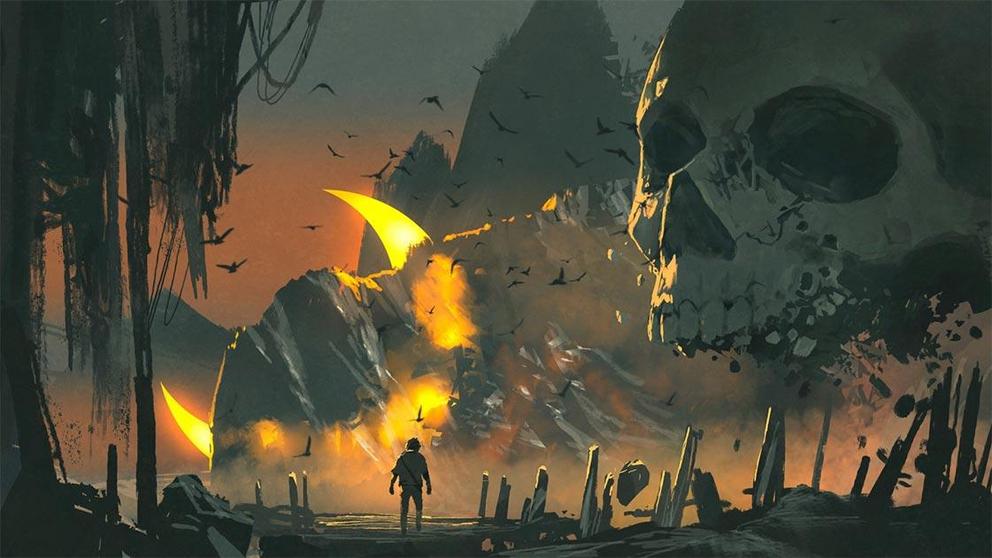The fall of the giants and their fate according to ancient texts
Is the answer of the downfall of the giants found in ancient texts?
Giants were here. In using the term giants, I am referring to persons at least 7 feet (2.1m) and up to 13 feet (4m) in height. Given that pre-modern man was significantly shorter on the average than we are today (many athletes in modern times are 6’5” or taller (2 meters)) these giants would have certainly seemed of extraordinary stature.
That an ancient race or races of giants once existed throughout the world, from China to North America, is a matter attested to not only in the written records of various civilizations but in the archaeological record as well. As Jason Jarrell and Sarah Farmer note, the vast number of gigantic humanoid skeletal remains excavated in the North American region alone makes it statistically highly unlikely for us to interpret all of them as genetic anomalies as mainstream scholars often do.
Giants were here. Yet, this observation leads us immediately to another problematic question: If giants-as a race or races-once existed in antiquity, why do they not exist now? What happened to them? What factors led to their extinction?
The archaeological record largely, though not entirely, fails us in answering these questions. This is particularly evident in the work done on giant civilization(s) in North America. North American archaeologists and anthropologist have done amazing work addressing the unique cultural features of the Hopewell and Adena, pre-Columbian peoples who were either themselves giants or direct descendants of a previous race of giants. At the same time, North American archaeology is at pains to explain the sudden disappearance of both of these civilizations sometime around 500 AD.
In this article, I will propose an alternative anthropological method for determining the fate of the ancient giants. Rather than attempting to interpret the sparse and inconclusive archaeological evidence, I suggest that scholars turn to ancient texts and the mythological/religious traditions they contain. As Erik Von Daniken notes, ancient literature, while highly mythological, often retains fact at its core.
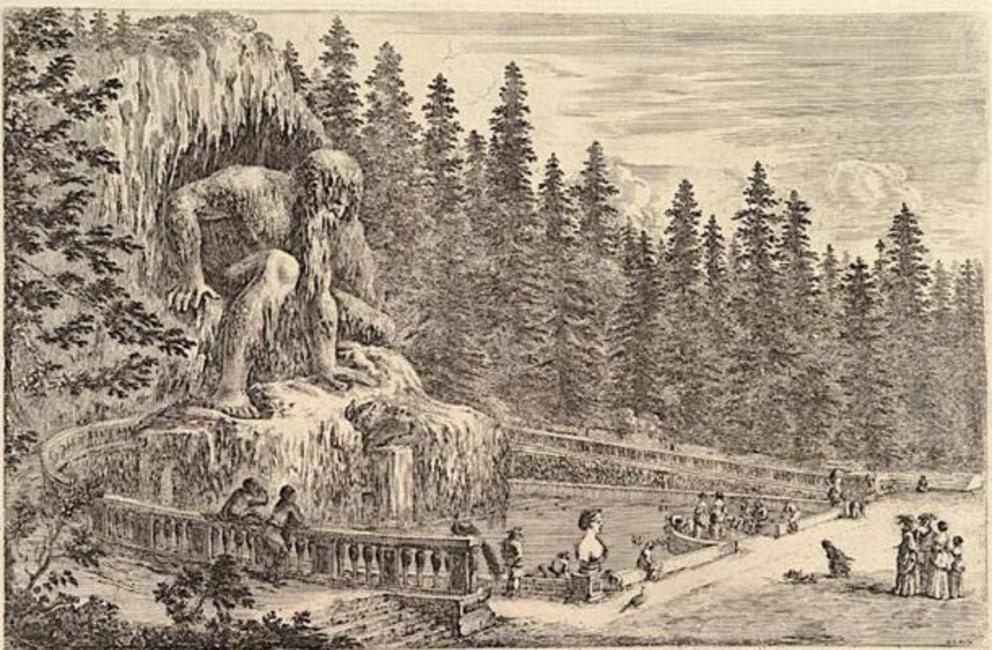 Colossal statue of the giant Appenino.
Colossal statue of the giant Appenino.
Furthermore, as Von Daniken also points out, many of the narratives contained in ancient texts are themselves far more literal than modern 21 st century academics give them credit for. When this material is taken into consideration, it suggests that many of the ancient giant civilization(s) were violent and oppressive in their culture and that eventually they were destroyed through their own violent tendencies and actions.
The Description of Giants in Ancient Literature
As Xaviant Haze notes in his recent work Ancient Giants , tales and stories of giants are a universal phenomenon found in nearly every human culture throughout recorded human history. When these various accounts are examined, one common theme emerges, namely that the giants and the civilizations they created were defined by violence and bloodshed. While a comprehensive examination of giants in ancient oral and written traditions is well beyond the scope of this article, it is possible to narrow our focus here to the treatment of giants within a particular culture and their body of literature.
As someone with a background in biblical studies, the ancient Israelites immediately came to mind as the best candidates for such an examination. In contrast to many other ancient Near Eastern societies, the history of ancient Israel is very well documented in both biblical (i.e. the Old Testament/Hebrew Bible) and extra-biblical sources.
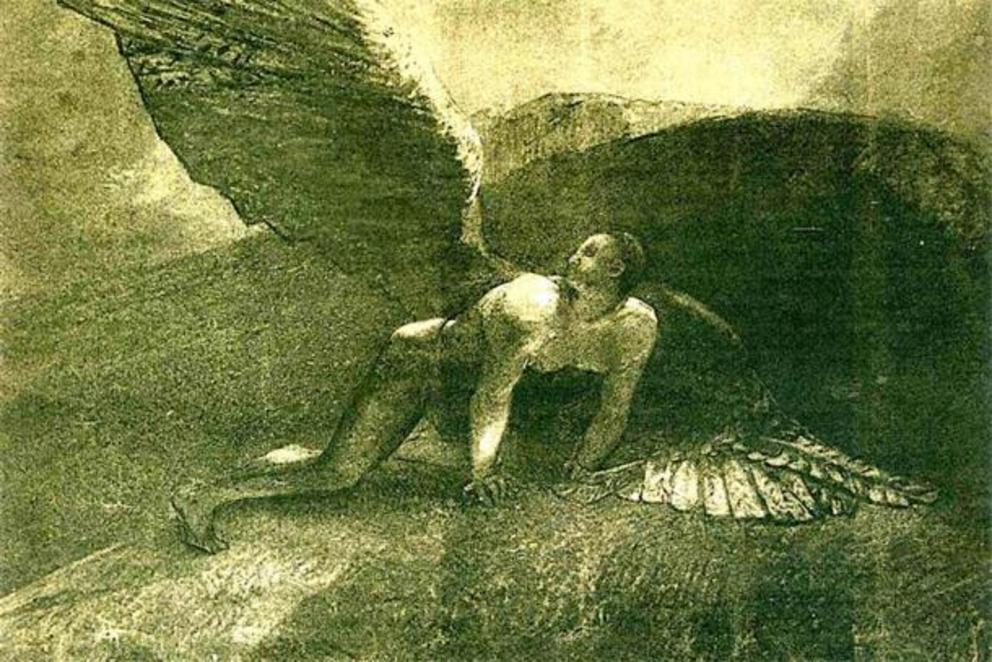 The ‘Book of Giants’ tells the story of pre-diluvian origins of evil and the fate of the Watchers and their giant offspring.
The ‘Book of Giants’ tells the story of pre-diluvian origins of evil and the fate of the Watchers and their giant offspring.
One of the earliest references to giants in Israel comes from the Yahwist account of the great deluge found in Genesis chapter 6. (The Yahwist being one of the four authors or sources for the material in the first five books of the Old Testament commonly referred to as the Torah or Pentateuch. The four source theory was popularized in the late 19th century in the work of the famous German biblical scholar Julius Wellhausen.) Here they are linked to the “ sons of God ” (Hebrew: bene ‘elohim ) who forcefully take the “daughters of men” ( banot ‘anashim ) as wives.
The Latin translation of the Genesis 6 passage reads:
Gigantes autem erant super terram in diebus illis: postquam enim ingress sunt filii Dei ad filias hominum illaeque genuerunt isti sunt potentes a saeculo viri famosi
But giants were over the earth in those days. For after the sons of God entered into the daughters of men and these (women) gave birth. These are the powerful ones from long ago, the famous men. (Genesis 6:4)
(All translations of Latin or Hebrew texts are mine unless noted as otherwise.)
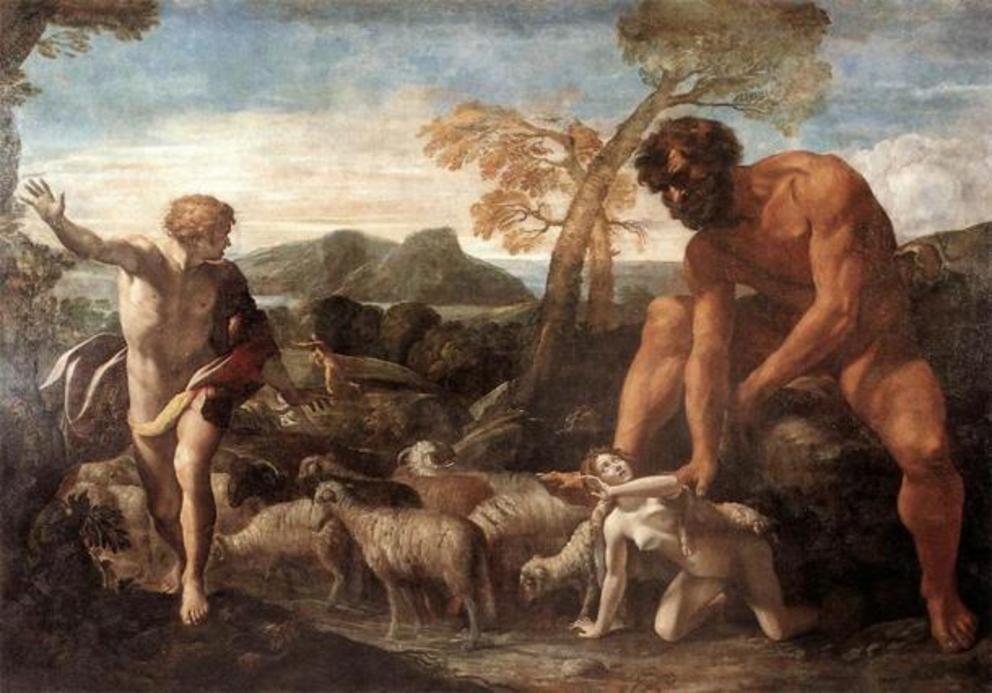 The Old Testament shares stories about giants taking human women.
The Old Testament shares stories about giants taking human women.
Though the flood account suggests that the giants were exterminated with the rest of the inhabitants of the earth, sans Noah and his family, they appear again much later in the biblical timeline in what scholars refer to as the Deuteronomic history. (In biblical studies, the Deuteronomic history refers to the material from Joshua to 2 Kings in the Old Testament. The history begins with Israel’s entry into the Promised Land and ends with the destruction of the Southern Kingdom, Judah, in 586 BC.)
Within this history is undoubtedly the most famous account of a giant in biblical literature and possibly in Western culture: the (violent) encounter between the Israelite David and the giant Goliath from Gath (1 Samuel 17).
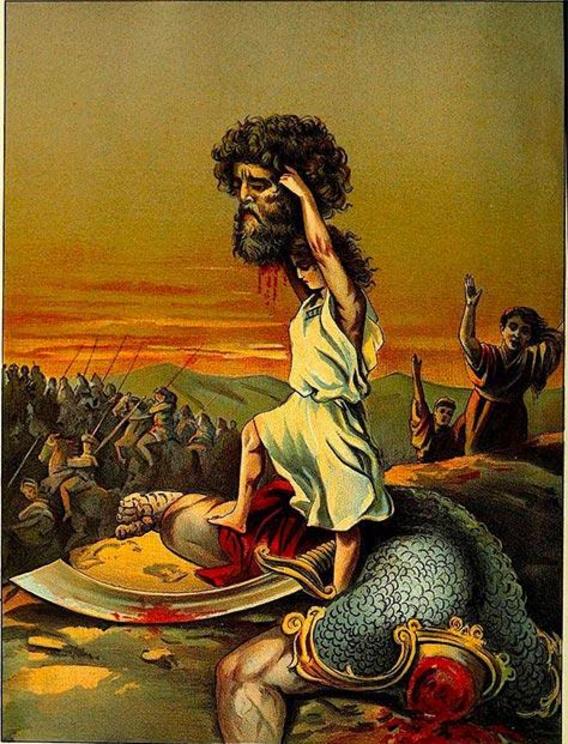 David holding the head of the giant Goliath.
David holding the head of the giant Goliath.
It should be noted that in both the Deuteronomic history and in the earlier Yahwist source, the giants are associated with heightened violence. As the Hebrew term laqach suggests, they forcibly take (i.e. sexually assault) the “daughters of men” leading to the birth of hybrid, super-human offspring which extra-biblical tradition identifies with the Greek gods and heroes . (In the first volume of his Antiquities of the Jews , the 1 st century AD Jewish historian Josephus links the giants of Genesis to Greek demigods such as Hercules.)
In later encounters between the giants and Israel the outcome is always violent leading to warfare and bloodshed between the two groups. It is this particular feature of the giants that yields us insight into what may have happened to them not only in ancient Israel but throughout the world.
The Destruction of the Giants
We are provided with an explicit account regarding the fate of the pre-diluvian giants in extra-biblical literature. In the apocryphal book of Ecclesiasticus, included in the Catholic but not the Protestant canon of the Old Testament, we find the following statement.
Non exoraverunt pro peccatis suis antique gigantes qui destructi sunt confidentes suae virtutis.
The ancient giants, who were destroyed for trusting in their own strength, were not exonerated for their sins. (Ecclesiasticus 16:8)
Two things are suggested in this statement from Ecclesiasticus. First, that the ancient giants had extraordinary might and power. Secondly, their destruction occurred because they relied too heavily on this power.
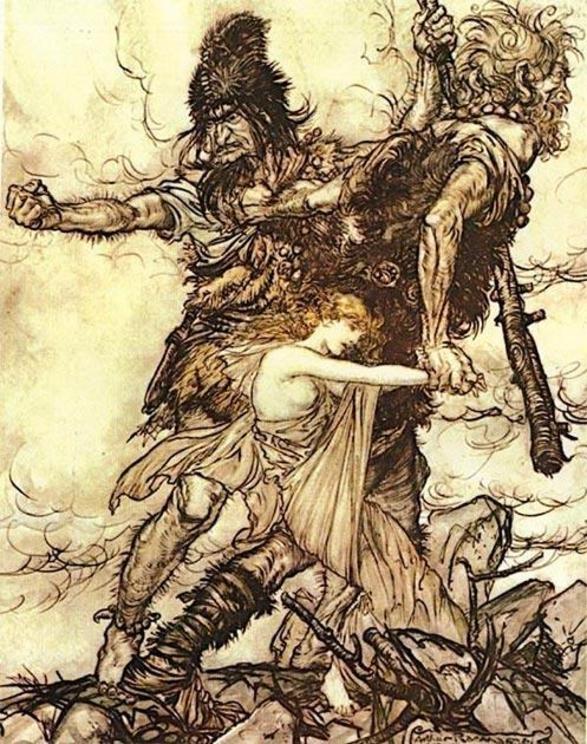 In Ecclesiasticus it claims the giants were undone by violence.
In Ecclesiasticus it claims the giants were undone by violence.
In biblical terminology, to “trust in one’s own might” has both a religious and secular meaning. In the former context, it refers to neglecting (in the view of the biblical authors) the power of God in favor of assuming that one’s own power and strength are sufficient.
In the latter context, it is always used in reference to abuse of power usually through violent, physical oppression. Yet the text does not state whether the giants killed each other off or were destroyed by their victims finally rising up against them.
More insight into the question of the giants and their final fate can be found in turning to the Hebrew text of the Old Testament. In the Yahwist flood account in Genesis 6, the author repeatedly notes that because of the giants the land was filled with violence (Hebrew: hamas). As noted in Strong’s Hebrew dictionary, the term hamas is often used in reference to self-destructive violence meaning acts of physical violence directed not just at others but ultimately towards oneself and one’s dealings with members of their own community.
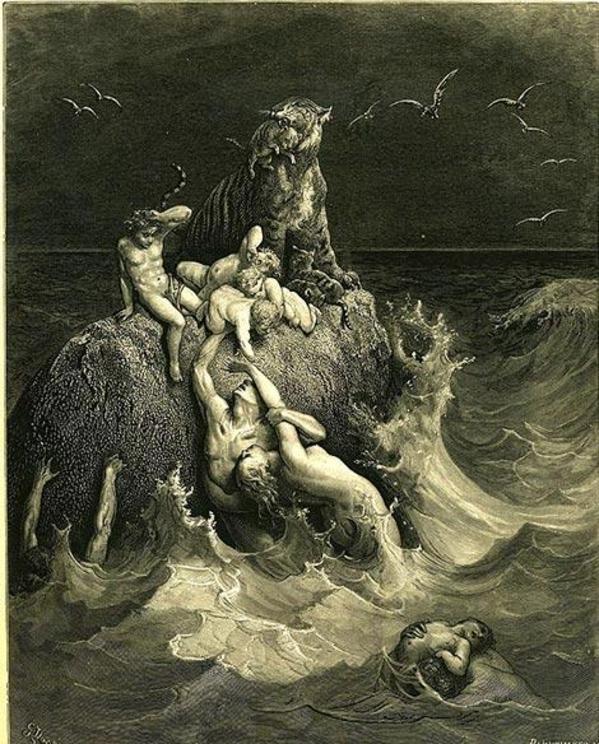 The Bible hints to the destruction of the giants via the flood.
The Bible hints to the destruction of the giants via the flood.
In other words, hamas is a self-consuming, almost suicidal type of violence and its associated with the giants here suggests that even before the actual flood event they were in danger of extermination through killing each other off. One could even conclude, based on the use of hamas in Genesis 6, that the giants were destroyed through some type of civil war.
Such an understanding of the fate of the giants would correspond well with the archaeological evidence and oral traditions around the world dealing with giants particularly in North America. In the mid-Western region of the United States, two pre-Columbian civilizations, the Hopewell and the Adena, seem to have mysteriously and quickly disappeared after what archaeologists infer was a sudden, massive battle between the two groups.
This parallels the type of self-destructive violence that is described in relation to the giants in the Old Testament. On the other hand, traditions exist among various Native American tribes of a violent conflict between their ancestors and ancient races of giants in North America .
For example, the Pauite Indians refer to an ancient race of hostile and violent giants known as the Si-Te-Cah. As in the biblical account, the giants oppressed these ancestors who eventually rose up in revolt against them and exterminated them.
Conclusion on the Fate of the Giants
The literal footprints and remains of civilizations peopled and inhabited by now extinct races of giants are found throughout the world. In this article, I have attempted to provide a possible explanation as to why these giants no longer exists drawing on traditions and narratives preserved in the Old Testament/Hebrew Bible.
The biblical texts suggest that the giants were not only violent in nature but were destroyed through this self-consuming violence. This fate for the giants appears to be supported in the archaeological evidence (e.g. the seemingly immediate destruction of the Hopewell and Adena peoples) in addition to various Native American oral traditions. When this evidence is taken into consideration it can perhaps serve as a guide for modern archaeologists and anthropologists who struggle to explain the sudden disappearance of these fascinating, if apparently brutal, gigantic races.

